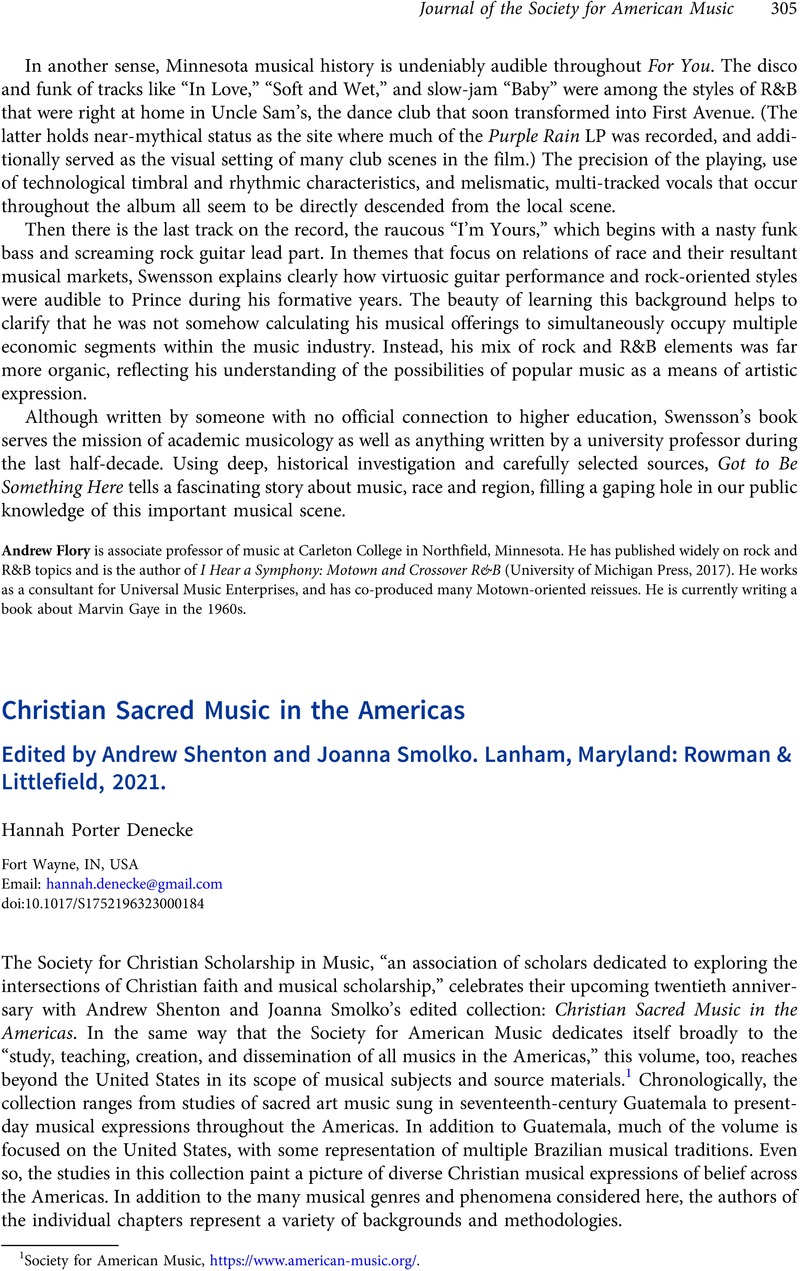No CrossRef data available.
Published online by Cambridge University Press: 06 September 2023

1 Society for American Music, https://www.american-music.org/.
2 Steuernagel notes that this genre is not musically related to North American gospel music (133).
3 Walker, William, The Southern Harmony, and Musical Companion (Philadelphia, PA: E.W. Miller, 1847)Google Scholar.
4 Cone, James, A Black Theology of Liberation (Philadelphia, PA: Lippincott, 1970)Google Scholar.